Introduction
Do Robins Use The Same Nest: The nesting habits of robins are a subject of curiosity, particularly whether they reuse the same nest. In this exploration, we’ll delve into the fascinating behavior of robins regarding nest selection and reuse, shedding light on their nesting preferences and habits.
Robin nesting habits are a captivating aspect of these beloved songbirds’ behavior. As we continue our exploration, we will uncover more details about whether robins use the same nest for multiple breeding seasons or if they opt for new nesting sites each time. Understanding this behavior offers insights into the complex world of avian reproduction and habitat selection.
The nesting behaviors of robins provide a window into their intriguing life cycles and interactions with their environment. As we delve deeper into the topic, we will uncover the patterns and choices robins make when it comes to nest selection and potential reuse. This exploration allows us to appreciate the adaptability and resourcefulness of these avian creatures in their quest to successfully raise their young.
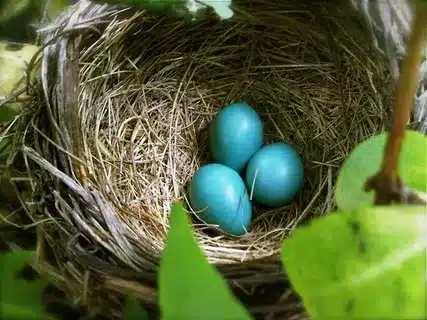
Do robins go back to the same nest every year?
They do not normally use the same nest year after year, but if they have good nesting success in a place, they very often return there. If not, they may move even within the same season.
Robins are known for their resourcefulness and adaptability when it comes to nest selection. While they may not necessarily return to the exact same nest every year, they do exhibit a preference for nesting in familiar territories. Here are some key points to consider:
Territorial Familiarity: Robins are territorial birds, and they often establish territories that they defend and use for nesting. They are more likely to return to the same general area or neighborhood each year.
Nest Site Variation: While robins may return to the same general territory, they typically build new nests each breeding season. They may select different trees, shrubs, or structures within their territory for nest construction.
Nest Maintenance: Robins may use the same tree or shrub from a previous year but will build a new nest rather than reusing an old one. They also tend to make repairs or additions to their nests if they decide to reuse a nesting site.
Nest Site Availability: Availability of suitable nesting sites can influence their choices. If a previous nesting site is no longer available or suitable, they will select an alternative location.
Do robins use each other’s nest?
Nest sharing is not a common behavior for American Robins, but it has been reported previously. The behavior has also been observed in the closely related Common or Eurasian Blackbird, which is in the same genus, Turdus.
Robins are territorial birds that generally prefer to have exclusive use of their nesting sites. While they may not typically use each other’s nests, there can be exceptions and interesting interactions:
Nest Ownership: Robins are known for their territorial behavior, and they often establish territories for nesting. They prefer to have exclusive use of a nesting site and are not prone to sharing nests.
Aggressive Defense: When another robin or bird attempts to encroach on their territory or use their nest, they can be quite aggressive in defending it. This includes vocal displays, posturing, and even physical confrontations to protect their nesting sites.
Nest Site Competition: In some cases, there can be competition for nesting sites among robins. This may occur in areas with limited suitable nesting locations, leading to disputes over territory and nests.
Nest Parasitism: While robins typically don’t use each other’s nests, they can be targets of nest parasitism by other bird species. Birds like the Brown-headed Cowbird may lay their eggs in robin nests, leading to the robin inadvertently raising the cowbird chick alongside its own.
Do robins reuse other robin nests?
Sometimes the nests are reused. One nest was built on top of an old robin’s nest that was constructed three years ago. So, if you find an old bird nest it’s a good idea to leave it alone. One creative robin used parts of an old nest for building a sturdy nest under the eave of a house.
Robins are territorial birds that typically build new nests each breeding season rather than reusing the nests of other robins. However, there can be exceptions and intriguing circumstances to consider:
Nesting Territory: Robins are known for establishing and defending their nesting territories. They tend to choose specific areas or neighborhoods for nesting and may return to the same general territory year after year.
Nest Construction: While they may revisit the same territory, robins generally construct new nests for each breeding season. They are skilled builders and create nests using grass, twigs, mud, and other materials.
Nest Site Selection: Robins can be selective about their nest sites, choosing locations based on factors like safety, availability of food, and proximity to water. They may use different trees, shrubs, or structures within their territory for nest construction.
Nest Repair: In some cases, robins may make repairs or additions to old nests, especially if they are reusing a previous nesting site. However, they typically build a new nest rather than relying solely on old ones.
Why do robins abandon their nests?
Typically, birds may abandon nests for a variety of reasons: they may have been disturbed too often, often by predators or human activity; something may have caused the eggs to be nonviable (infertility, environmental conditions, or a cracked eggshell); or the parents themselves could have run into trouble.
Robins, like many bird species, may abandon their nests for various reasons, which can be both natural and human-induced. Here are some common factors that can lead to nest abandonment:
Predation: Nest predation by animals such as raccoons, squirrels, snakes, or even other birds can pose a significant threat to robin nests. If a nest is disturbed or its contents are destroyed, the parents may abandon it to seek a safer location.
Human Disturbance: Human activities near nesting sites, such as construction, landscaping, or excessive noise, can cause stress and disturbance to robins. In response, they may abandon their nests to avoid potential threats.
Parasitism: Some bird species, like the Brown-headed Cowbird, are known as nest parasites. They lay their eggs in robin nests, and when the cowbird chick hatches, it can outcompete robin nestlings for food. In some cases, the presence of a parasitic chick may lead to nest abandonment.
Nest Quality: If a robin deems its nest site unsuitable, perhaps due to structural instability or exposure to harsh weather, it may abandon the nest in search of a better location.
Health Issues: Illness or injury to one or both of the adult robins can impact their ability to care for their nest and young. In such cases, they may abandon the nest to focus on their own well-being.
Predatory Threats: The presence of predators like hawks or domestic cats in the vicinity can make robins feel unsafe and prompt them to abandon their nests.
Does a robin use the same nest twice?
While robins might repair or build on top of a previous nest, most of them build a new nest. This is best for many reasons. A used nest is a mess, stretched out and often home to insects or parasites and possibly poop. Take the nest down and the nest site will be ready for the next robin family.
Robins are known for their resourcefulness and adaptability when it comes to nesting. While they may not use the exact same nest twice in a row, they do exhibit a preference for familiar nesting territories. Here’s a closer look at their nesting habits:
Nest Site Familiarity: Robins are territorial birds, and they often establish and defend nesting territories. They are more likely to return to the same general area, including a familiar tree or shrub, each breeding season.
Nest Building Anew: While they may revisit the same territory, robins typically build new nests for each breeding season. They construct nests using materials like grass, twigs, mud, and feathers, ensuring they are fresh and in good condition.
Potential Nest Repair: On occasion, robins may make repairs or additions to old nests if they choose to reuse a previous nesting site. However, they usually build a new nest rather than relying solely on old ones.
Nest Quality and Availability: The availability of suitable nesting sites and the quality of the previous year’s nest can influence their choices. If an old nest is no longer suitable, they will select an alternative location.
Do robins use the same nest for different broods?
For example, American robins may have up to three broods in one season and typically build a new nest for each brood. Birds most often pick a different location for later nesting sites, even after successful attempts.
Robins, with their resourceful and adaptable nature, sometimes exhibit a unique nesting strategy by reusing the same nest for different broods within the same breeding season. Here’s a closer look at this fascinating behavior:
Nest Site Familiarity: Robins are territorial birds and often establish nesting territories in specific areas. They may return to the same general territory each year, including familiar trees or shrubs.
Nest Reuse for Multiple Broods: In some cases, particularly when the environment is conducive and food resources are abundant, robins may reuse the same nest for multiple broods within the same breeding season. This allows them to save time and energy on nest construction.
Nest Repairs and Additions: After each brood, robins may make repairs or add fresh materials to the nest to ensure it remains in good condition for the next set of eggs.
Flexibility and Adaptability: The decision to reuse a nest depends on factors like the availability of suitable nesting sites, food availability, and environmental conditions. Robins exhibit flexibility in their nesting strategies based on these factors.
Do robins lay eggs multiple times in the same nest?
YES! Sometimes! Like many birds, they lay 2–3 sets of eggs a season and will return to a familiar nesting spot to have other batches. A few days after the babies have left, simply clean out the existing nest(if they are a messy bird ex:finches) and they will most likely return.
Robins, like many bird species, typically lay eggs in a single clutch during each breeding season. However, there are instances when they employ a unique strategy by laying multiple clutches of eggs in the same nest. Here’s a closer look at this intriguing behavior:
Single Clutch Norm: Robins typically lay one clutch of eggs per breeding season. A clutch typically consists of three to five eggs, and they are incubated and raised together.
Multiple Clutches Exception: While it’s less common, some robins may lay multiple clutches of eggs in the same nest during a single breeding season. This behavior is often seen in response to specific environmental conditions or food availability.
Nest Maintenance: Robins that lay multiple clutches in the same nest may make repairs and add fresh materials between each clutch to ensure the nest remains suitable for incubation and raising the young.
Environmental Factors: Factors like food abundance and favorable weather conditions can influence the decision to lay multiple clutches. When resources are plentiful, robins may increase their reproductive efforts.
Why do robins return to the same nest?
None of these locations sound like they should be particularly successful, but if it works the first time, it’s likely to be repeated. If mother robin is able to raise her babies, it means she has picked a location that has enough food nearby and is safe from predation, and that’s all she cares about. She’s not proud.
Robins are known for their territorial behavior and, at times, their tendency to return to the same nest site each year. This intriguing behavior can be attributed to several reasons:
Territorial Familiarity: Robins are territorial birds and often establish specific nesting territories. Returning to the same area each year allows them to exploit familiar surroundings, including food sources and suitable nesting sites.
Nest Site Quality: If a particular nest site has proven successful in the past, robins may choose to return to it because they have confidence in its suitability for raising their young.
Energy and Time Efficiency: Reusing an existing nest can save robins time and energy that would otherwise be spent on constructing a new nest. This efficiency can be especially advantageous in seasons with a tight breeding schedule.
Environmental Stability: Returning to the same nest site offers stability in terms of environmental conditions, such as shelter from adverse weather or reduced exposure to potential predators.
Nest Maintenance: Robins may make repairs and additions to the nest between breeding seasons, ensuring that it remains in good condition for the next brood.
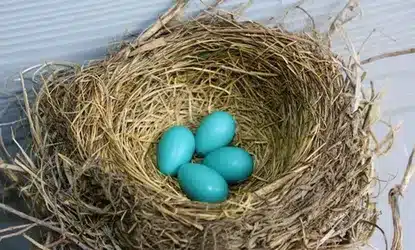
Conclusion
Robins generally do not use the same nest for multiple breeding seasons. They often opt for new nesting sites, though exceptions can occur. Their nesting behavior showcases adaptability and resourcefulness in the quest for successful reproduction.
Robins’ nesting behavior is a fascinating aspect of their life cycle, and it offers insights into their adaptability and survival strategies. As we delve further into this topic, we can explore the specific reasons behind their preference for new nesting sites each breeding season and the factors that influence their choices. Understanding these nuances adds depth to our appreciation of these beloved songbirds.
As we continue to explore robins’ nesting habits, we can delve into the ecological significance of their nesting behavior. This may include their interactions with other bird species and how their nest sites impact local ecosystems. Additionally, we can examine conservation efforts aimed at protecting robin nests and their contributions to biodiversity.

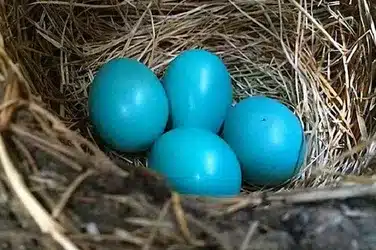
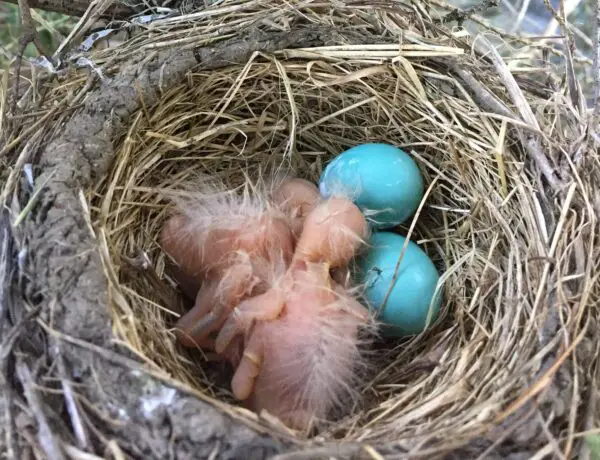
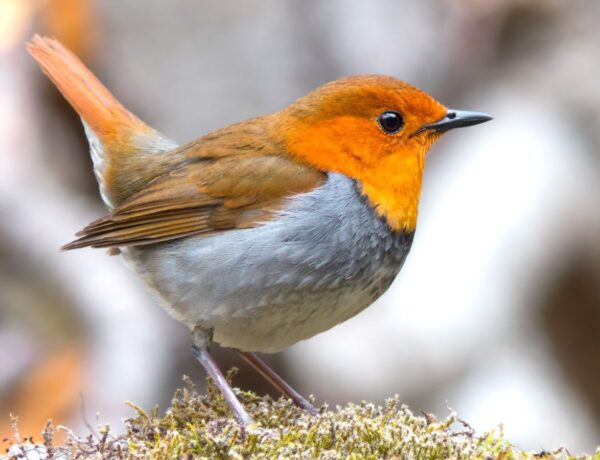
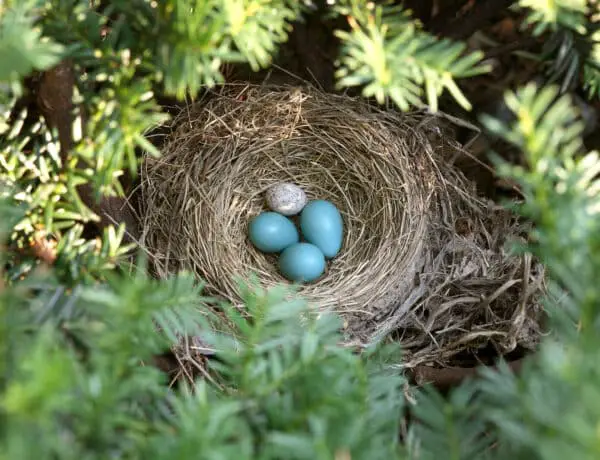
No Comments